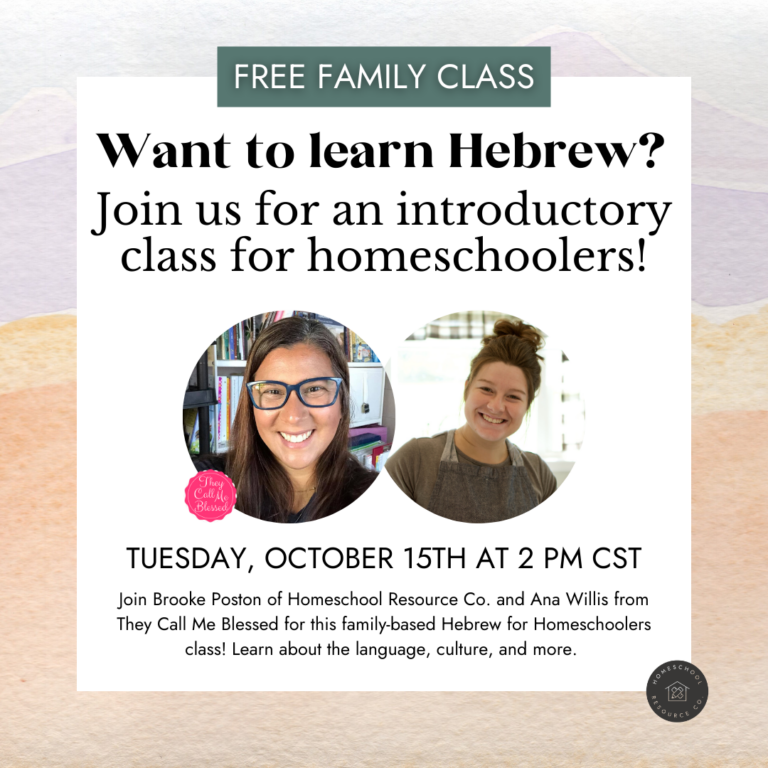How to Homeschool Using the Charlotte Mason Method
Charlotte Mason homeschooling has become popular in recent years, but this homeschooling style has been around for over 100 years. This style of homeschooling follows the principles of education pioneer Charlotte Mason. Follow along for the second part of our Charlotte Mason series to learn how to use the Charlotte Mason approach to homeschool your children.
While many homeschooling styles follow rigid structures or curricula, the Charlotte Mason approach is more a teaching method than a specific curriculum or program type. This approach follows a simple principle: “Education is an atmosphere, a discipline, a life.”
If you've decided that the Charlotte Mason approach fits your family, you may wonder how to structure your daily routine or lessons around this method. There are a few key concepts that this educational style includes:
- living books
- music and art appreciation
- nature study
- narration
- dictation
- developing good habits
- character building
- short lessons
Living Books

This post is part of The 2023 Charlotte Mason Blog Series!
Get inspiration and encouragement for your homeschool journey while grabbing great freebies, discounts, and other tools & resources!
Instead of dry textbooks and fact memorization, Charlotte Mason believed in using “living books” for her students. Living books are books that use vivid language to both teach and entertain. These books are written with a passion for the topic and captivate the reader, keeping them interested and engaged in the subject.
“Why in the world should we not give children, while they are at school, the sort of books they can live upon; books alive with thought and feeling, and delight in knowledge, instead of the miserable cram-books on which they are starved?”
-Charlotte Mason
One of the many benefits of using the Charlotte Mason method for homeschooling is the ability to pick and choose the living books your family uses. If you have access to your local library, you have endless options.
Music and Art Appreciation
Art and music are key components of a Charlotte Mason education. Implement composer and artist studies and allow your children to observe, understand, and appreciate artists and musicians.
Choose a composer or artist and focus on that individual for several weeks or months. It's less crucial for your child to be able to regurgitate facts about the person than it is for them to recognize and appreciate them and their work.
Hymn studies, living books about composers and artists, folk song singing, and watching live music are great ways to incorporate the arts into your homeschool.
Nature Study
Charlotte Mason strongly believed in children being outdoors as much as possible and allowing exploration and collaboration in nature.

Spend afternoons outside, and take your reading, art supplies, and journals on a nature walk. Document the things you see around you in a nature journal and use guidebooks to help you identify and learn about plants and animals.
Narration
Narration or retelling information in their own words allows children to express themselves easily without the physical challenge of handwriting.
Instead of traditional tests or quizzes, encourage your children to narrate what they've learned from their lessons and living books. Oral narration can be started at a very young age. Children aren't encouraged to start written narrations until around age 11 using the Charlotte Mason method.
The practice of narration assesses comprehension and fosters critical thinking and communication skills. It allows children to take ownership of their learning, shaping their understanding and perspective of the subjects they're learning about.
Dictation
Dictation is a great way to practice grammar and punctuation. Mason used motivational quotes or scripture for dictation. You can use lines or quotes from your favorite books, movies, or famous people.
Allow your child to study the passage first, giving them time to ask questions about the punctuation and grammar. Then, dictate the passage to them while they write it down.
Developing Good Habits
Mason believed that working on developing good habits early in life was the key to a solid foundation for education. By focusing on one habit at a time and starting at a very young age, habits are easily formed and become second nature.
She categorized habits into five categories:
- mental
- moral
- decency and propriety
- physical
- religious
She also believed that when a bad habit emerges, it's worth stopping and correcting it before too much time has passed. Developing good habits and retraining bad habits form “railroad tracks” in the child's life, allowing them to move smoothly and stress-free.
One way to quickly help instill good habits is by modeling the habits you wish your child to learn. Encourage your child to follow the lead of those around them instead of constantly reminding or commanding.
“The mother who takes pains to endow her children with good habits secures for herself smooth and easy days.”
-Charlotte Mason
It also makes it easier for parents when things like focus, manners, and obedience are constantly repeated habits that don't need reminders.
Character Building
Building good character stems directly from the development of good habits. Character traits were thought of as habits by Mason. A teacher's role is to help guide the child to practice good habits that fall into the moral category, which in turn helps them build character.
Some examples are:
- obedience
- reverence
- truthfulness
- temper
Short Lessons
Mason believed that the time spent on lessons should directly correlate with the child's developmental stage. Lessons should only last 5-15 minutes per subject for younger students. This allows the child to focus entirely on the lesson and move on to a new topic when their attention starts to fade.
By keeping your lessons short, you can also touch on more subjects each day. This allows you to provide your child with a broader range of topics.
Whether you are following the Charlotte Mason method stringently or merely adopting some of the principles into your homeschool, the approach has many benefits. Be sure to compare this homeschooling style to others to understand what will work best for your family.











